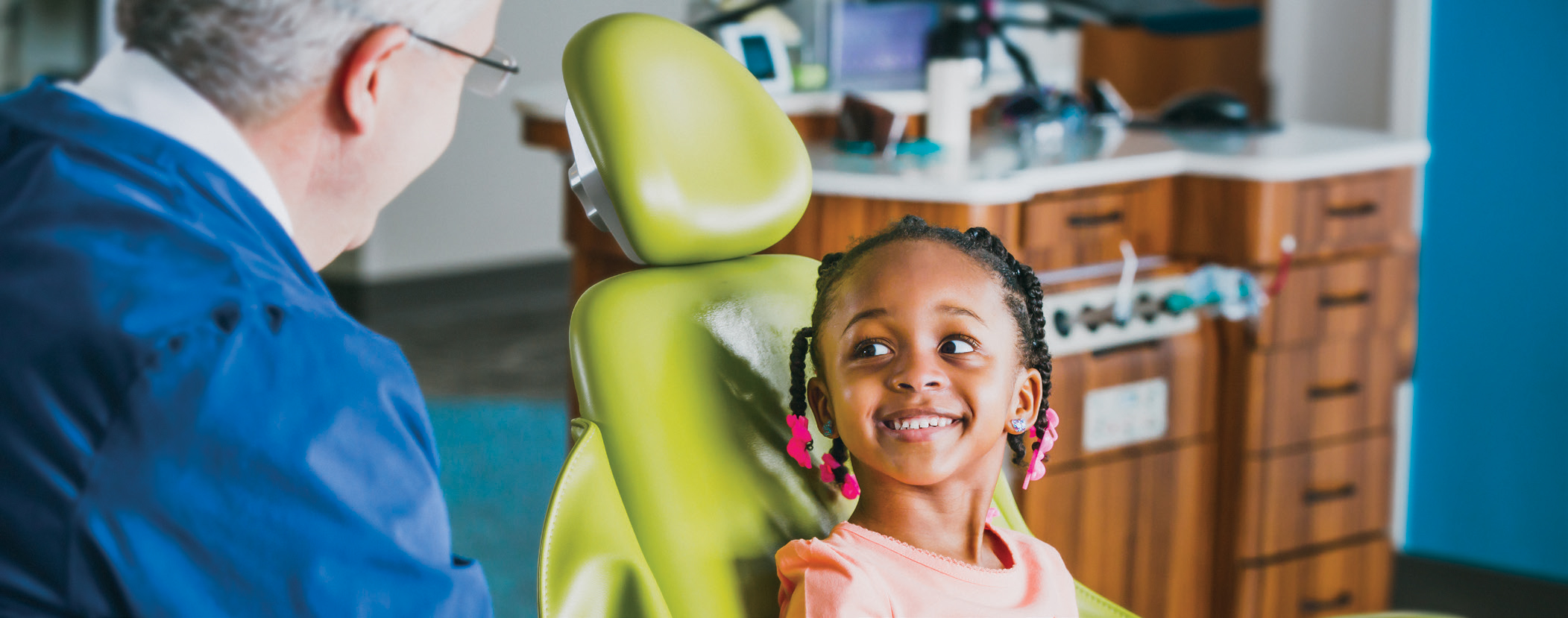Your privacy is important to us. Consistent with our Website Privacy Policy, we may use cookies and other tracking technologies to ensure the performance and security of our website. This may include disclosures about your use of the website to third parties. By using our website, you agree to its use of these technologies.


Life Stages of Oral Health: Children's dental health ages 4-12
Scarlett is your typical 7-year-old – going a million miles a minute with no time for keeping her room clean, brushing her teeth, or going to bed. (You know, those boring things parents always want kids to do.) Even when she’s at her busiest, Scarlett’s parents always prioritize their child's dental health. Good oral habits at this age – especially as her permanent teeth are coming in – will set her up for a lifetime of healthy smiles.
What age do you start brushing a child's teeth?
It's recommended to use a pea-sized amount of fluoride toothpaste some time between the ages of two and three. Scarlett has been brushing her own teeth for years now. She started brushing between the ages of two and three – as soon as she understood that she needed to spit toothpaste out instead of swallowing it. Now, at 7, Scarlett does a pretty good job of brushing her teeth. Her mom and dad have kept an eye on her oral health routine up until this point to make sure that she brushes for at least two minutes twice a day. By the time she’s 8, Scarlett probably won’t need brushing supervision at all, though she’ll likely still need help flossing daily until she’s 10.
What foods are good for kids' teeth?
Tooth-friendly foods include snacks like cheese, yogurt, lean meats, veggies and fruits. Scarlett’s parents have played a big part in her tdental care by feeding her these foods. When she does have sweets, Scarlett has them with meals since eating other foods helps stimulate saliva, which helps wash away food particles and reduces the chance for cavities. For most children, cavities are nearly 90 percent preventable, so establishing good oral health habits and watching what Scarlett eats is very important.
Get Familiar With Your Dentist
Though it’s common for kids this age to get anxious about dental appointments, Scarlett’s parents have taken her to the dentist since she was just one year old. This has allowed her to develop a good relationship with Dr. Shawn. Even so, there are a few things Dr. Shawn and Scarlett’s mom do to make sure Scarlett’s appointments go smoothly.
- Dr. Shawn always explains what’s going to happen, whether it’s just a standard cleaning or involves something new, like X-rays.
- Sometimes Scarlett uses earphones to listen to music if she’s feeling a little nervous.
- Dr. Shawn lets Scarlett’s mom still come into the exam room with her (although many dentists prefer that the child get used to not having a parent present during exams or treatment).
- When the appointment is over, her mom always tells her what a good job she did.
At what age should children first visit an orthodontist?
It's recommended that children visit the orthodontist by age 7. Even though she likes Dr. Shawn, Scarlett will get to meet a new dentist this year. She started losing her baby teeth last year, and the eruption of permanent teeth means some problems could develop. Often, the earlier an orthodontist can catch those problems, the easier – and less expensive – they are to fix.
How long do sealants last on teeth?
Scarlett will continue to shed her baby teeth and grow permanent teeth until she’s about 13. When the molar teeth come in – first molars around age 6 and the second molars between 11 and 13 – the dentist might discuss sealants with Scarlett’s parents. Sealants have the most benefits when applied to newly erupted molars and can last up to 10 years.
Sealants, a thin plastic coating applied directly to teeth, help prevent bacteria from settling into the natural pits and grooves of teeth where most tooth decay in children develops. They can reduce the chances of a tooth forming new decay by up to 70 percent.
Frequently Asked Questions
It’s recommended to use a pea-sized amount of fluoride toothpaste sometime between the ages of 2 and 3.
Tooth-friendly foods include snacks like cheese, yogurt, lean meats, veggies and fruits.
It’s recommended that children visit the orthodontist by age 7.
Sealants have the most benefits when applied to newly erupted molars and can last up to 10 years.